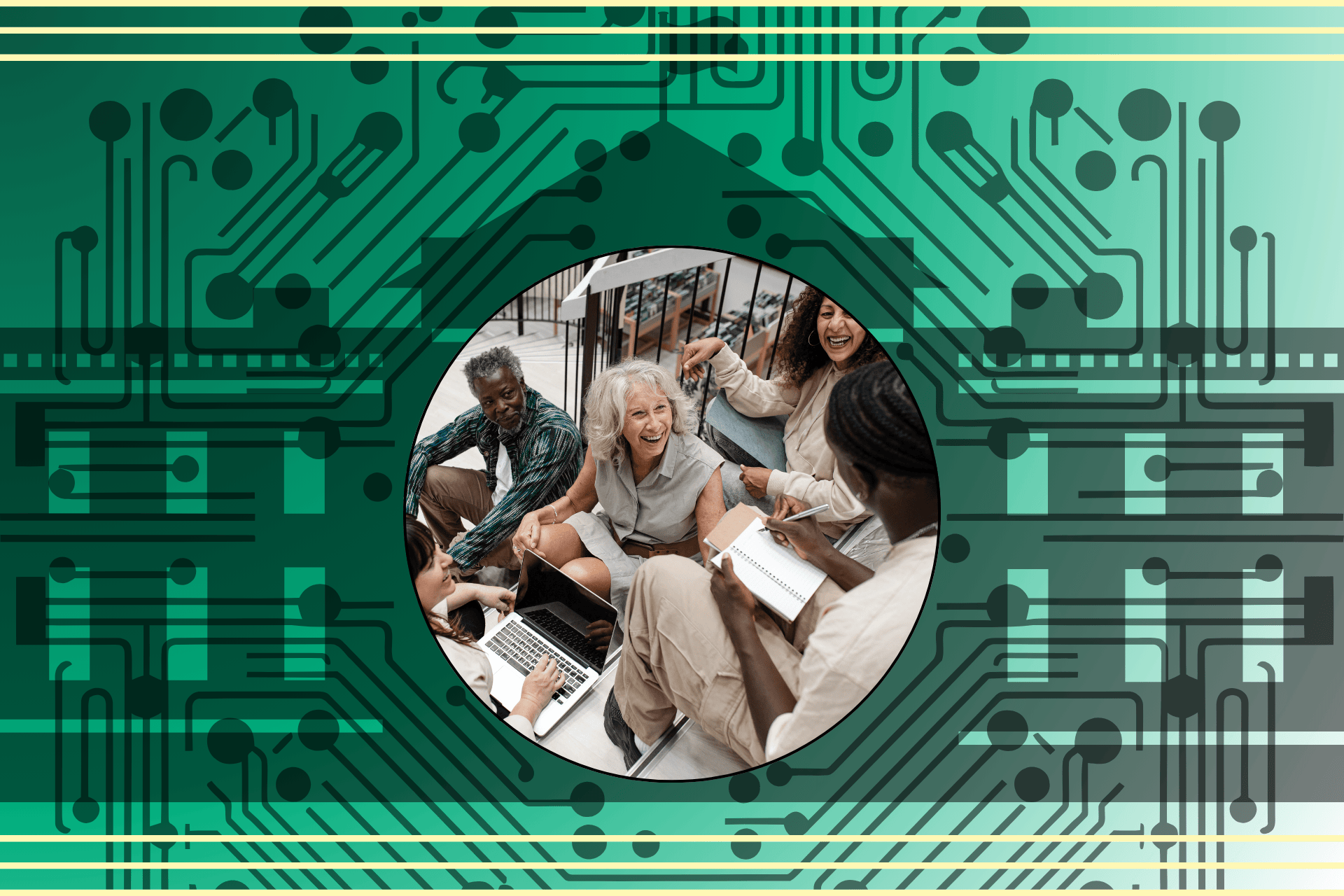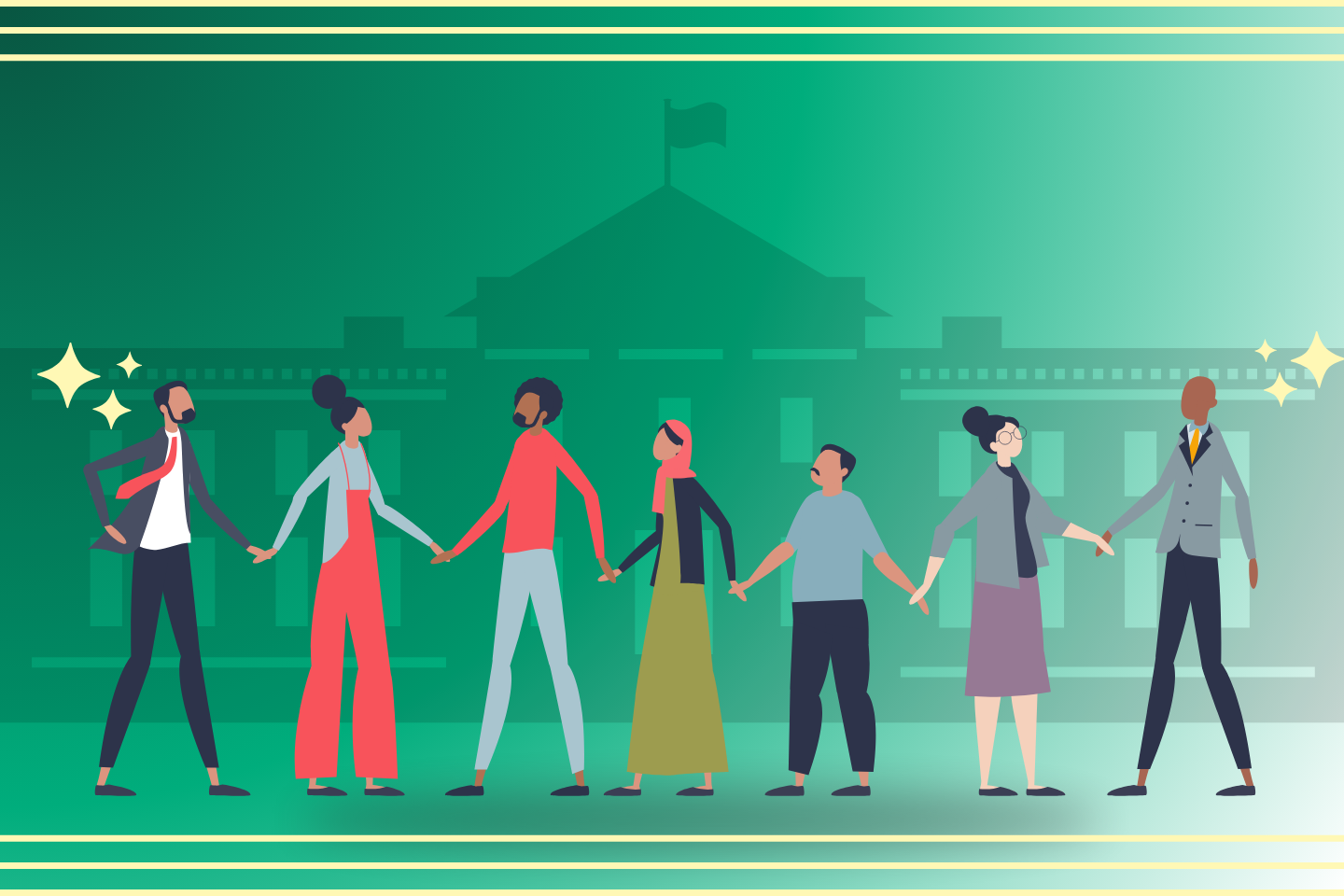
This is a deeply personal, as much rooted in my experience coming of age during the AIDS Crisis and the ensuing Culture Wars here in the United States as it is in my experience as an undergraduate researcher in Russia documenting the shape of the post-Soviet LGBT movements while studying the means of opposing, overturning, and replacing Communist governments. The former grounded me in community organizing, direct action, and the formal and informal networks used by vulnerable people and organizations; the latter re-emphasized that people are resilient, clever, and keenly aware that there are always cracks in autocratic structures designed to de-humanize them.
As a nonprofit technology expert, having been associated with multiple Big Tech institutions throughout my career, what immediately comes to mind is a framework that accomplishes three key goals: Protect Your Mission, Protect Your Constituents, and Protect Your Donors. At the core of these goals is what you do with your data and information: what you collect, how you associate it with people and organizations, where you keep it (or don’t), and how it will inform your organization’s legacy and the actions of your allies.
I do not share any optimism that there will be sustained successful opposition, not for lack of trying, to the incoming Trump Administration’s goals for our country: be they dismantling the safeguards on executive action and power, breaking traditional international alliances and norms, or dismantling domestic safety nets. The systems and structures that led to the moment through which we are about to live have been constructed for decades: there is far too much momentum behind them, and undoing them will take an equivalent period of effort over time. How we got here is the subject of future writing, but in the meantime, there is a window of opportunity right now to start taking action on accomplishing the aforementioned goals.
Underlying all of this is a hypothesis that looks like this:
- Nonprofits need to make new alliances and cultivate their own version of NATO (Looking at you, Articles 2, 5, and 9), even if they’re with organizations that don’t perfectly align to their constituency and values.
- Do not let the quest for perfection and moral purity override the necessity of good: Perfection takes more time than may be available to you. Don’t let go of your authenticity, your dreams, and your core values, just remember that urgency doesn’t allow for all of these to be concurrently met.
- Not everything can be a priority even if everything feels urgent, and clear-eyed prioritization is now a survival tactic to conserve your own resources during the time to come.
What would I tell an Executive Director, especially those of organizations serving constituents targeted by the incoming Trump administration? Call every like-minded organization and ally they can reach starting today, and say “We may face a circumstance where who we serve and how we serve them will be used against us. How do we rethink our alliances with each other, and what bridges between our organizations can we start building for their mutual strength and survival?”
Start making these new friends and allies now - either with similar constituent-serving organizations, similar organizations across geographic and political spectrums, and/or organizations in your domain with whom you know have allied concerns. This is not the time to allow ego, petty disagreements, past transgressions, territorialism, resentment over your competitor having won that large grant, or other inter-organizational squabbles to get in the way of greater purpose: together you’re stronger, separate, you’ll be that much easier to target.
I’d also suggest that the meaning of “data” has just greatly expanded. For years, this has usually implied the world of the digital, but it now includes everything from sticky notes with reminders to do tomorrow to that file cabinet archive behind your desk that has 47 years of organizational information inside. When an organization is targeted by the state, it will all be confiscated, evaluated, and itemized - you now need to consider how easy or hard this confiscation process will be.
Finally, to grantmaking institutions and funders, I’d strongly recommend not only re-evaluating criteria for applications and reporting, but the information you’re collecting about the organizations you fund. The hallmark of survivability is agility and flexibility, both of which are incredibly expensive to create: for all the talk of grantmaking being a sharing of power between applicant organizations and grantmakers and all the academic and action frameworks being employed to level this playing field, rote survival is a radically different beast. Start thinking less about your own needs to report to your Boards, programmatic ideations for funding, and evaluation frameworks, and start thinking about how to transfer as much money as possible, as quickly and unrestrictedly (and potentially anonymously) as possible, to organizations that are now on the front lines of state targeting.
Protect Your Mission
At the heart of how impact organizations make change is their mission and service modality. Assuming there are local, regional, or other alliances between your organization and others, how do the constituents, cares, and causes served by your organization persist should it become targeted as a domestic “terrorist?” What do your constituents know of other organizations in their proximity that can step in to serve them should yours go offline? Where are you sharing and keeping your strategies and goals, and who else can pick these up immediately should your organization cease to operate? What happens to your research, files, and data if you’re subpoenaed, raided, your status revoked, or you are otherwise targeted for violence and property destruction?
Drawing a lesson from my own past experience and studies, here’s a few suggestions:
- Start thinking about where and how to hide things, and transfer them anonymously to others: this includes your operational documents and strategies, information on donors and constituents, research and advocacy materials, and so on. If your organization gets targeted, the speed at which these will be taken away from you is breathtaking. Know where they’re going ahead of time, and prepare them for immediate transfer to allies. Practice this handoff, and make sure it can be done rapidly.
- Do you have a leadership and organizational continuity plan in place? Have you ever had to consider the immediate departure of key personnel and leaders? What happens if someone is suddenly absent from your organization and how will the functions they serve be preserved?
- Do some spring cleaning. Now’s the time to look into your paper and digital archives, and ask yourself if everything you have is truly what you need. Shed excess weight, literally and metaphorically: should your organization be targeted, these will be turned against you. Should your physical facilities be subject to violence or destruction, not knowing what’s important to preserve from them will slow down your recovery.
- Tap into your community: the more distributed you are able to make your overall operation and workflow, the less likely all of it will be taken offline. This includes making trusted alliances and building operational “safehouses” for your mission. In a world of exacerbated state control, centralization is an Achilles Heel.
Protect Your Constituents
Already a discussion with the advent of AI, LLMs, CRMs, and all the tools of the digital age, if you haven’t begun evaluating the necessity of the information you’re collecting about your constituents to meet your mission, where it’s kept, its digital security and means by which to protect sensitive information, then this is your wake up call. Having studied the behavior of many Eastern European states during the Soviet era regarding their surveillance of everyday citizens, it is not too far of a stretch of my own personal imagination to be convinced that there could be both covert domestic access to your information granted by Big Tech companies; and, potential domestic and international targeted hacking taking place at accelerated rates.
I can’t emphasize enough that the preconditions for this kind of access are already occurring: Media outlets owned by tech moguls, technology platforms (and much of Silicon Valley) full-throated endorsements of the incoming Trump administration, and the capitulation of technology leaders whose prior support for opposition (Elon Musk began as a Democrat) is best illustrated by the former champion of business “for good” and Salesforce CEO Marc Benioff’s post on X the day after the election: “Congratulations to President @realDonaldTrump and his Family on your remarkable achievement. This has now become a time of great promise for our nation, and we look forward to working together to drive American success and prosperity for all. May Gd Bless The United States of America. #Leadership #FutureOfAmerica”
Take that in: Scapegoating the LGBT communities and immigrants for over two years on the campaign trail, multiple felony convictions, sexual harassment and abuse, double impeachments, and let’s not forget a small event called January 6 is being touted as “great promise,” “leadership” and the “future of America.” It is absolutely a remarkable achievement of revealing the man (and the business goals) behind the curtain.
A few itemized suggestions:
- Harden your technology infrastructure. Back in my podcasting days, I had the privilege of this particular interview: https://whyitmatters.castos.com/episodes/privacy-for-all-with-joshua-peskay-kim-snyder
- Evaluate your data collection from top to bottom. What are necessary collection points, and what are vanity collection points? The more you collect about your constituents, donors, and operations, without safeguards on privacy, protection, and anonymity, the more vulnerable everyone becomes should this information get harvested, subpoenaed, hacked, or otherwise exposed.
- Can you digitally anonymize your constituents entirely? Stop associating information with names and other PII? Can you take advantage of encrypted, offline, or other means of storage? How centralized is all of your data about them, and do you have a redundant copy of it elsewhere?
- Who can access your physical and digital data, and under what conditions? Do you have appropriate safeguards in place? Are there physical, digital, masking/obscuring, or offline measures you need to put in place? In the most extreme cases, is there a “Destroy,” button to press to prevent it from falling into the hands of either the federal government or hackers?
- If you’re leveraging Big Tech platforms for your data, either for CRM, data warehousing, constituent engagement and advocacy, volunteering, or any other means, ask yourself if the information in these systems were to become immediately public and exposed to the world, what would be the consequences for your constituents, donors, and organizational allies? For years, nonprofits have been fed the syrup-sweet promise of data centralization through these tools, but the businesses and people behind them may no longer be capable of (or inclined towards) keeping it private to your organization. Especially if they themselves become targets of federal investigation, or see opportunity to curry favor with the incoming Trump administration.
- Ask yourself if there’s anything so sensitive, either to your organization or its constituents, that in the event your organization is targeted it should simply be immediately destroyed: medical files, case notes, and digital information are some examples of things that may need to be run through a literal or virtual shredder. Figure out what this is, how to facilitate its rapid disposal and/or disbursement, and practice now.
Until now, nonprofits have operated under the assumption that democratic norms will prevent them from becoming vulnerable to targeting and surveillance. In the era we’re about to enter, consider how much, when, and where you store your information. What’s your data “Go Bag,” and what’s your “Burn Box?” Be creative, think expansively, and draw lessons from the history of American civil rights activism post-Reconstruction, and myriad of international movements that have successfully stood up to oppressive states.
Protect Your Donors
The first rule of legal investigation is, “Follow the money.” What happens when this is money that is being given to your organization? The more money is anonymized, shunted through intermediaries, and otherwise removed from its origin, the more work it will be to go after the original source. I’m not suggesting that American nonprofits suddenly act like the Mafia, however, I am suggesting that there is no reason why, if your organization becomes a social and/or political target, its donors won’t equally be targeted if they can be identified. This is the slippery slope of the removal of democratic safeguards: suddenly, the final objectives of government action can no longer be defined. Here’s some additional thoughts:
- Rethink giving programs, rethink giving methods and records, rethink giving attribution. Your donors may need to have their names entirely removed from your databases, and donation attributions may need to come through intermediary entities such as DAFs, bank checks (in lieu of personal checks), even cash (and, much to my personal chagrin, cryptocurrency).
- Engage your donors ASAP. Ask them how they’re feeling about the times to come, and what they need to feel safe in the continued support of your organization. Ask them if they’re comfortable with their personal information being in your database, and if they’re OK with foregoing the niceties of donation attribution in favor of their continued support - especially if this is support for organizations now on the front lines of being targeted as domestic “terrorists.”
- Ask them for renewed commitment, but not the usual kind. Ask your donors if they remain committed to the service mission of your organization, AND that of others allied with you. Communicate to your donors where they can shunt fiscal support should your organization suddenly go offline, and consider asking them to set aside legal defense funds should this occur. “How do you feel about your association with us, should things get dark real fast? And what do we need to do to preserve this relationship?”
- Are there anonymizing, even if not fully tax-deductible, entities that your donors need to know exist that could take fast action on behalf of your organization? PACs, trusts, bank accounts, and other means of distributed (or potentially international) financial support that they could activate?
- Are your donors comfortable with how you currently communicate with them? If this is by email, Slack, or other corporate-owned platforms that have demonstrated willingness to kowtow to the Trump administration, do they even want their information in them at all? Are there other means of private, encrypted communications that you may want to consider engaging with your donors? Now is the time to set these up.
- To the funding institutions out there: grantmakers of all kinds, community foundations, private foundations: How will you help preserve tax-deductible donations for donors while infusing vulnerable organizations with financial support? How can you set up fiscal structures that organizations can access quickly for support from which donors can still benefit? Can you pre-emptively establish legal defense funds for select organizations or sector needs?
Admittedly, some of these suggestions fly in the face of long-held norms and conventions around maintaining propriety of data, strategy, service, structures, and organizational operation. Despite the popular narrative that we’re entering into unprecedented times, in fact, there’s plenty of precedent on hiding from, outwitting, persisting, and even thriving under autocratic states. What’s new is that we’re experiencing it for the first time in the United States.
If history tells us anything from Latin America to Eastern Europe, there are plenty of examples from which to draw that give us templates for action: from South American songwriting to Eastern European Samizdat literature, people on the receiving end of state oppression have given us a wellspring of survival tactics.
The biggest takeaway I hope you leave with from this missive is that we must now get creative in ways that don’t always create permanent records but still facilitate networks, engagement, and organizing for your organization. The antidote to autocratic leadership is creative thinking, decentralized organizing, and clever misdirection. Follow the social media posts, news articles, and attributed quotes of tech leaders associated with the applications and platforms your organization uses, and understand that capitulation is easily disguised as flattery - the siloing of traditional media and its conflation with entertainment now places the onus of observation on you: When a technology leader says what they believe, or what should happen, believe them at face value.
Lastly, if you believe that the mission of your organization is so banal or straightforward that neither you nor your constituents will be affected by the coming era, then I leave you with two thoughts:
- Your responsibility is to now help those organizations who will be immediately affected, even if their missions and goals serve entirely different purposes than yours. You are a shelter in the coming storm, and you have the power and privilege to ensure that both your own mission, and theirs, continues to be met. This will pull you out of your comfort zone, and will hopefully be a welcome journey.
- If your comfort zone is so comfortable that this feels like an insurmountable challenge, then I leave you with the indelible words of Pastor Martin Neimöller:
“First they came for the Communists
And I did not speak out
Because I was not a Communist
Then they came for the Socialists
And I did not speak out
Because I was not a Socialist
Then they came for the trade unionists
And I did not speak out
Because I was not a trade unionist
Then they came for the Jews
And I did not speak out
Because I was not a Jew
Then they came for me
And there was no one left
To speak out for me”
These are things we're deeply considering at Benevolent Tech and PledgeNoHate.tech. Reach out if you're interested to explore more.
With gratitude to Amy Rose, for your wisdom, guidance, and thought partnership.

There is no AI for Good
Over 20 years ago, when I was working as a technology manager for a national nonprofit, I was dragged kicking and screaming into the world of social...

The Shifting DEI Landscape: A Moment for Leadership Authenticity
Recent federal-level decisions have brought Diversity, Equity, and Inclusion (DEI) into sharper focus again—and for many, under renewed scrutiny. If...

 Tracy Kronzak
Tracy Kronzak
